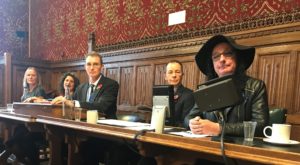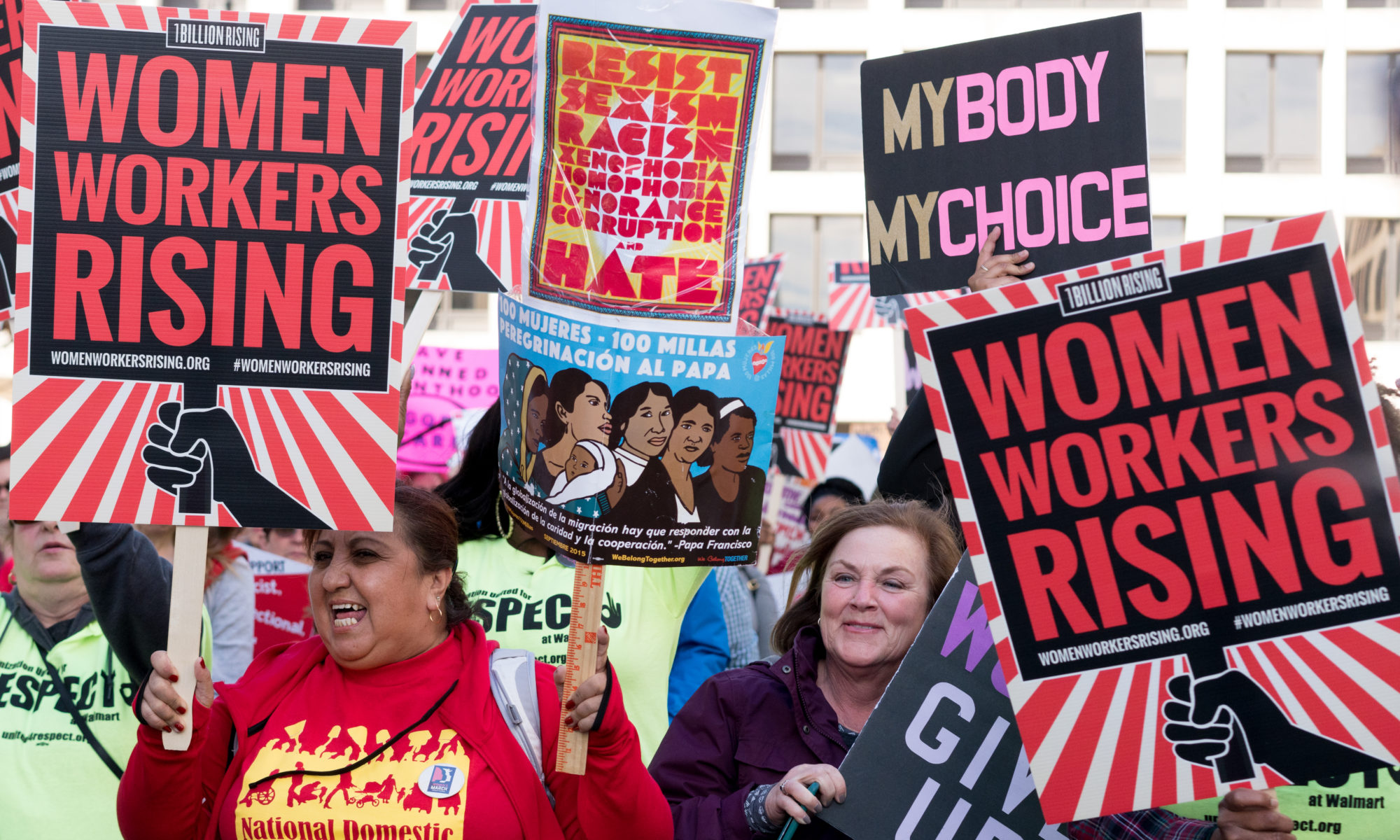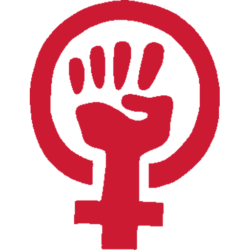
Following is a written version of the talk given by Judith Green on 31st October 2017 at a Transgender Law Concerns Meeting held in the House of Commons, which was chaired by David T C Davies MP. Talks given by the other speakers have been published on other sites, Miranda Yardley, Stephanie Davies-Arai, Transgender Trend and James Caspian, UKCP.
In thanking David Davies, I have a small confession to make. I’m a card-carrying member of the Labour Party and David’s party won’t be winning my vote, but he has won my gratitude for giving me this platform.
The current law sets out that being discriminating is not discriminatory where it is a proportional means of achieving a legitimate aim. This is a good law. It permits distinctions to be made that are vital for women. For example, women-only shortlists as a way of increasing representation in parliament are perfectly legal under the Equality Act. The same law permits a distinction to be made between those of us who are women by virtue of our sex and those who have a legally recognised gender under the provisions of the Gender Recognition Act.[1]
I’m here to talk about why this principle is absolutely vital to women, but also about some of the problems in the application of the law and how it could be strengthened. One of the reasons I feel so strongly is my own experience of using women-only services.
Due to my experiences of male violence, I was a justifiably angry and traumatised teenager. I left home and moved halfway across the country at sixteen. An organisation for female survivors of childhood sexual abuse was vital to my recovery. We were more or less a self-help organisation — fundraising to pay for therapists to facilitate small groups. The barriers to accessing that support were huge. For months I put off attending.
But once I found my courage, I never looked back. Amongst other female survivors I learned that I wasn’t alone, that it wasn’t my fault, that I was entitled to feel angry, that my boundaries were important, my truth and understanding of reality were important – not the lies imposed on me by the man who assaulted and raped me. That my instincts to protect myself, which I had suppressed in a situation where I had no hope of escape, were good ones to be trusted. I needed women-only space to learn these lessons.
In that organisation we had discussions about our relationship with groups for male survivors of childhood sexual abuse. We decided we wanted solidarity but not shared space. This was not only because including men would have hindered the valuable work I’ve just described, but also because, as women, we had been brought up to take care of others. We didn’t want to also take on that role for male survivors. For many of us, with boyfriends or husbands, this was the one space where we put our own needs first.
In those groups, what mattered to us was we were all of the same sex, not that we shared a letter on a driving licence or a reissued birth certificate. I imagine myself at that age, plucking up the courage after months to finally go to a meeting and finding myself sharing the space with someone physically male. All the vital lessons – about truth telling, boundaries, trusting my instincts and speaking up would have been undone in that moment. I would have been uncomfortable and silenced, familiar experiences from years of abuse. I would have been re-traumatised. I would not have gone back.
This is why such groups are given as an example in the guidance notes on the Equality Act, to explain that single-sex spaces can be exempt from including those who have a legally recognised gender through gender reassignment.[2]
However, the current law is not working to protect women-only spaces. I give as an example the service I used. It no longer offers spaces exclusively for women, instead advertising its services as being for self-defined females: that is for anyone who defines as female irrespective of their sex, and thus includes those who are physically male. Although the Equality Act permits an exemption, the organisation that allowed me to rebuild my life has chosen not to invoke it. Why?
The law is top-down. It relies on organisations to act on behalf of their clients but gives those service-users no rights to demand exemptions are invoked. It gives no rights to the most vulnerable service-users who are likely to feel the need for sex-segregated spaces most keenly. There is no obligation to consider whether invoking the exemptions is necessary in order to achieve legitimate aims. The cultural climate of funding considerations and activism intimidate organisations that might otherwise use the exemptions. They simply can’t afford to defend a legal case or be bogged down in a messy campaign against them. Official government guidance – co-written with campaigners taking a one-sided view – says exemptions only apply in ‘exceptional’ circumstances.[3]
But my circumstance is actually not that exceptional. Male violence against women is very common. According to the Office of National Statistics:
- 26% of women have experienced domestic abuse since the age of sixteen.[4]
- 5% of women have been raped since the age of sixteen.[5]
- 20% of women have been a victim of a sexual offence since the age of sixteen.[5]
- 11% of women have been a victim of sexual abuse in childhood, that is up to and including the age of fifteen.[6]
Even allowing for some overlap between these groups this is a massive constituency, amounting to millions of women in the UK. For those women who have escaped this type of violence, navigating male sexual aggression, intrusiveness and harassment is a much more universal female experience. This has been very clear in recent weeks with social media campaigns of women speaking out, such as #MeToo.
I’ve talked about one type of woman-only space. And you may be sympathetic to the need for protections for women in those circumstances. However, women are not only survivors of or fearful of male violence when we are in therapeutic groups. We carry these experiences with us when we use the swimming pool, use fitting rooms in a department store, when we are inpatients in hospital (where the policy to eliminate Mixed Sex Accommodation should apply). We are survivors of male sexual violence when we receive health services such as cervical screening and maternity care. I now work on the other side, in women’s health. It is widely recognised that women have a right to request a practitioner of the same sex, without having to give explanations or apology. It is a very sensitive area in which gender should not be allowed to override the category of sex.
We know that female prisoners are even more likely to have experienced male violence than other women.[7] Due to differences in patterns of offending, male prisoners outnumber female prisoners by 22 to 1. Even relatively small numbers of prisoners relocating from the male estate following transition would have a disproportionate impact on the women’s estate. In Littlehey, the largest dedicated prison for male sex offenders in the UK, it is reported there are eleven inmates on the Transgender Pathway, just under 1% of the inmates.[8] If across the male estate 1% of prisoners with convictions for sexual offences transitioned and were therefore relocated, they would outnumber the entire population currently imprisoned for sexual offences within the women’s estate.[9] If reflecting female-offending patterns, you would expect transgender prisoners to be a much smaller fraction of male sex offenders. That they are overrepresented suggests male patterns of offending are unaffected by gender-identity or transition, in keeping with the findings of a Swedish study published in 2011.[10] This overrepresentation has also been commented on by the British Association of Gender Identity Specialists who note the ‘ever-increasing tide of referrals of patients in prison serving long or indeterminate sentences for serious sexual offences. These vastly outnumber the number of prisoners incarcerated for more ordinary, non-sexual, offences.”[11] The Prison Service is entitled under Schedule 23 of the Equality Act to invoke exemptions to protect female prisoners in communal accommodation, but has chosen not to with some examples of abuses as a result.[12] Segregation on the basis of gender-identity cannot be an acceptable substitute for sex-segregation if we are to uphold the human rights of women prisoners and protect them from harm.
The statistics I’ve used depend on the category of sex – male and female – having meaning. Yet we have recently seen the Office of National Statistics recommend, albeit tentatively, that the question in the Census on sex be made non-mandatory, therefore undermining accurate comprehensive data collection.[13] Exemptions should be upheld in the visceral realm of health care and prisons and all the other physical single-sex spaces I’ve discussed and many others I haven’t had time to cover. If gender identity has primacy over sex, then sex as a protected characteristic ceases to exist. It is vital to extend the exemptions so that meaningful distinctions can be made in data collection and in law. Without that commitment, women simply won’t count.
Judith Green
References
[1] Equality Act 2010. Schedule 3 (in relation to service provision). Schedule 9 (in relation to employment). Section 195 (in relation to sport). Schedule 23 (in relation to communal accommodation).
[2] Equality Act 2010. Explanatory notes. “A group counselling session is provided for female victims of sexual assault. The organisers do not allow transsexual people to attend as they judge that the clients who attend the group session are unlikely to do so if a male-to-female transsexual person was also there. This would be lawful.”
[3] Government Equalities Office & Gendered Intelligence. Providing services for transgender customers: A guide November 2015
[4] Crime Survey for England and Wales (CSEW) Compendium Domestic abuse, sexual assault and stalking, year ending Mar 2016
[5] [5] Crime Survey for England and Wales (CSEW) Compendium Focus on violent crime and sexual offences, England and Wales: year ending Mar 2016
[6] Abuse during childhood: Findings from the Crime Survey for England and Wales, year ending March 2016
[7] http://www.womeninprison.org.uk/research/key-facts.php
[8] https://www.imb.org.uk/report/2016-17-imb-littlehey-annual-report/
[9] The Number of Gender Variant People in the UK – Update 2011 archived at https://uktrans.info/attachments/article/197/Prevalence2011.pdf see also https://www.gov.uk/government/statistics/prison-population-figures-2016
[10] http://journals.plos.org/plosone/article?id=10.1371/journal.pone.0016885
[11] http://data.parliament.uk/WrittenEvidence/CommitteeEvidence.svc/EvidenceDocument/Women%20and%20Equalities/Transgender%20Equality/written/19532.html
[12] http://www.dailymail.co.uk/news/article-4856268/Transgender-rapist-moved-women-jail-segregated.html https://www.thesun.co.uk/news/2792998/pre-op-transgender-killer-moved-back-mens-wing-sex-female-inmates/
[13] https://www.ons.gov.uk/methodology/classificationsandstandards/measuringequality/genderidentity/qualitativeresearchongenderidentityphase1summaryreport
The photo of the panel of speaker above was copied from Twitter

